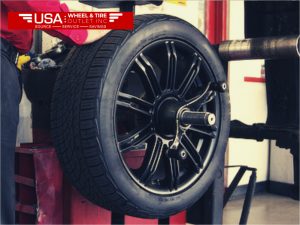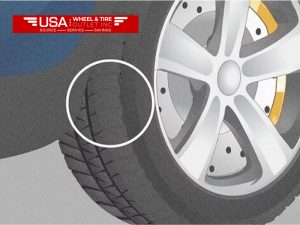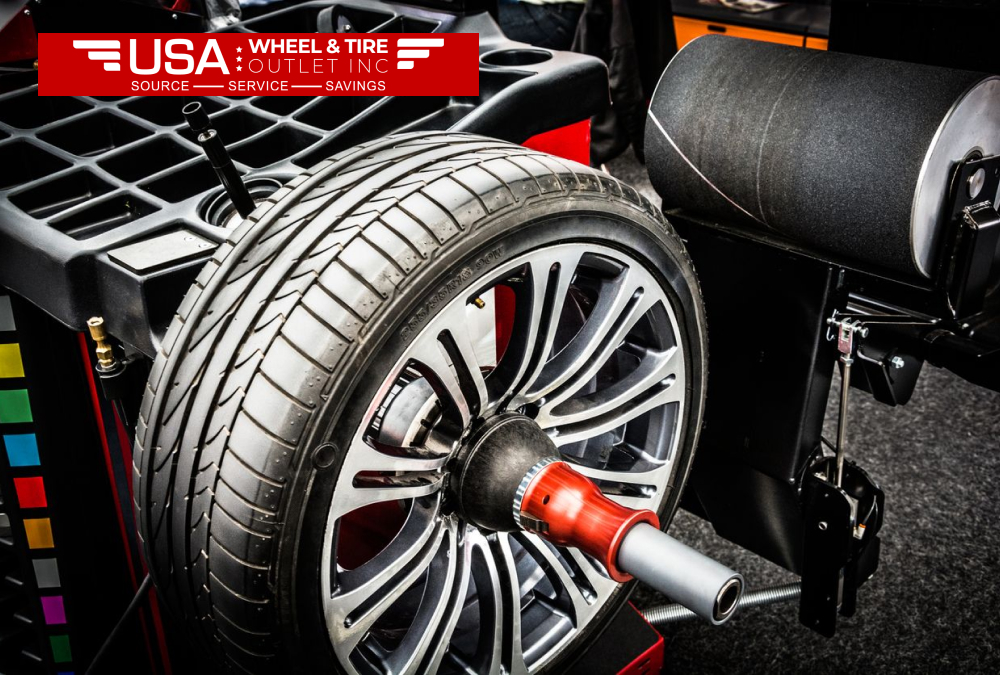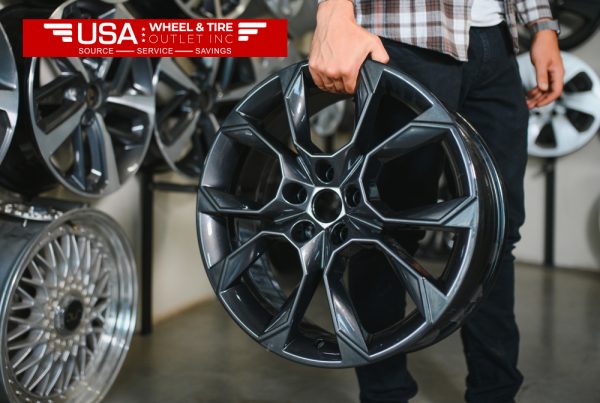Wheels for your car are part of what makes the drive possible. They require balance in the proper technical sense; they contribute to your safety, your car’s performance, and comfort when driving. Balancing improves handling, increases the longevity of your tires, and makes your ride smooth, vibration-free, and very comfortable. Now let’s find out why wheel balancing matters and how it can influence your driving experience.
What is wheel balancing?
The process that ensures the weight on your wheels and tires is evenly spread is wheel balancing. A technician, during the process, will make use of a machine measuring weight imbalances to adjust the wheel to meet the required balance. To restore balance, they will add small weights to the rim.
Why Wheels Balanced Is Important
It means that an imbalanced wheel brings uneven tire wear, impaired steering and even creates vibrations within the cabin. These small issues may start as little issues, but they might lead to costly repairs or even a car accident. Here’s why it matters:

1. Improved Ride Quality
It keeps improving the steering response and stability of your vehicle. Balanced tires make your vehicle move smooth when it’s cruising on highways or maneuvering through sharp curves.
2. Make Tire Maintenance Easy
Balanced wheels prevent uneven tire wear. This means that it would last longer, preventing you from spending more at a later time. Well taken care of tires along with balancing ensure maximum efficiency.
3. Vibration-Free Ride
Nothing turns a road trip sour quickly than a shaky steering or vibrating seats. Balanced wheels do away with all of this, giving you comfort and a quiet ride for hours on the road.
The Telltale Signs Your Wheels Aren’t Balanced
Imbalanced wheels do not always shout out for attention, but there are sure signs:

Vibrating Steering Wheel: If your steering wheel vibrates at high speed, that is a definite red flag.
Uneven Tire Wear: Observe your tires. Signs of uneven wear have unique patterns that indicate an imbalance.
Poor Fuel Efficiency: An imbalance makes your engine work hard and consumes more fuel.
Noisy Ride: Odd noises, for example, humming or thumping may signify unbalanced wheels.
Wheel Balancing Benefits You Can’t Ignore
Wondering if wheel balancing is worth all the effort? Here is why it should be done by each driver:
1. Smooth Ride
Balanced wheels make for a smooth ride without unnecessary jolts or vibrations.
2. Safety
The well-balanced wheels provide control of the car especially in the emergency maneuvers.
3. Extended Life for Tires
The imbalances bring uneven wear on the tires, which leads to reducing their lifespan. Balancing rectifies this problem.
4. Fuel Economy Improvement
Balanced wheels allow the smooth movement of the car, hence saving the fuel.
5. Money Saving
Balanced wheels save money through avoiding unwanted tire and suspension damage.
How Often Should You Balance Your Wheels?
You should balance your wheels every 5,000 to 6,000 miles or with each tire rotation. It’s also a good idea to have the balance of your wheels checked if:
You drive over a pothole or curb.
1. Safety
The well-balanced wheels provide control of the car especially in the emergency maneuvers.
2. Extended Life for Tires
The imbalances bring uneven wear on the tires, which leads to reducing their lifespan. Balancing rectifies this problem.
3. Fuel Economy Improvement
Balanced wheels allow the smooth movement of the car, hence saving the fuel.
4. Money Saving
Balanced wheels save money through avoiding unwanted tire and suspension damage.
How Often Should You Balance Your Wheels?
You should balance your wheels every 5,000 to 6,000 miles or with each tire rotation. It’s also a good idea to have the balance of your wheels checked if:
Wheel Balancing and Tire Maintenance Tips
Your tires do not get in the perfect shape through balancing alone. The following are a few maintenance tips of the tire.
1. Tires Rotation
Rotates your tires at an interval of 6,000 miles.
2. Pressure Test on Tire
Faulty balancing will also occur in either under inflated or overinflated tires. Carry out monthly check up
3. Inspection of Damages
Look for cracks, bulges, or punctures. Damage can throw off balance.
4. Alignment Checks
Misaligned wheels can cause imbalance. Have your alignment checked annually.
Do-It-Yourself vs Professional Wheel Balancing
Some car enthusiasts try to balance their tires themselves, but that is not recommended. Professional wheel balancing uses specific equipment for accurate work. A trained technician may also spot issues that are not apparent, such as bent rims or suspension problems.
What Can Expect When Visiting a Wheel Balancing Shop?
When you visit a shop, you can expect the following to happen:
1. Inspection: The technician examines your tires and wheels for any damage.
2. Mounting: The machine places the wheels.
3. Testing: The machine senses that there is a weight imbalance.
4. Adjustment: Adding weights to restore balance.
5. Confirmation: The technician checks the balance.
Balanced Driving: Desired Outcome
Imagine driving on a smooth road without constant jarring of an unbalanced wheel. That is the magic of a vibration-free ride. It reduces stress on your car and makes every journey enjoyable. Balanced wheels also protect your suspension, ensuring your vehicle stays roadworthy longer.
The Cost of Neglecting Wheel Balancing
In Accordance with USA Wheels & Tires INC, Skipping wheel balancing might save time today but is costly in the long run. Unbalanced wheels lead to:
Wheel Balancing-The Science of It
The science is more than wheel balancing over a quick-fix; there is a bit of detail in understanding wheels mechanics with your vehicle. Unbalanced wheels lead to:
All of which outweigh the balancing service in money.
Wheel Balancing-The Science of It
The science is more than wheel balancing over a quick-fix; there is a bit of detail in understanding wheels mechanics with your vehicle.Every wheel in your car has a certain weight distribution. If that weight isn’t evenly spread, it can cause the wheel to wobble or vibrate, especially at higher speeds.
The machine detects and balances the weight by spinning the tire and telling a technician where to place small balancing weights along the rim. It tells the technician exactly where to place the small balancing weights along the rim in order to counteract uneven distribution, which makes it easier for the wheel to rotate smoothly. The end result is to ensure your tires are spinning uniformly and avoid extra stress on vehicle components.
An unbalanced wheel, even slightly, can cause all sorts of problems over time. It’s not just about a bumpy ride; it’s about the longevity and performance of your car. Balancing the wheels improves the overall efficiency of the car and preserves its systems.
How Imbalanced Wheels Impact Your Vehicle
When your wheels are not balanced, it is not only your comfort that is at risk; it’s the performance and safety of your vehicle. Here are some of the potential issues caused by unbalanced wheels:
1. Uneven Tire Wear
The most evident result of an unbalanced wheel is uneven tire wear. Imbalances cause specific regions of the tire to be worn down faster than others. Over time, uneven wear can lead to failure of the tire, meaning it is no longer safe to drive, especially at high speeds. Balanced wheels allow the forces of the road to be evenly distributed across the tire, preventing tire wear and tear before it is too late.
2. More Stress on Suspension
The suspension of your car absorbs shock and makes your ride stable. The constant vibrations from the unbalanced wheels increase stress on the suspension parts. After some time, it brings about costly repair for the suspension. The balancing of the wheels reduces that stress and maintains the durability of the suspension.
3. Bad Handling and Control
The car may be unstable on the road when driven with unevenly balanced wheels. Vibrations and uneven forces on the tires influence how the car handles, especially when turning or accelerating. In extreme cases, it makes the vehicle hard to control, especially in emergency situations. Balanced wheels keep the car stable, thus making it better in terms of control and responsiveness.
4. Increased Fuel Consumption
Unbalanced wheels also affect fuel efficiency. When your wheels are imbalanced, your car works harder to achieve the same speed. This puts extra strain on the car and results in increased fuel consumption. The balancing of your wheels makes sure that your vehicle is running smoothly and thus doesn’t exert as much force to keep it moving. This ultimately lowers fuel costs.
Wheel Balancing for Different Types of Vehicles
All car types—be it a sedan, SUV, or heavy-duty truck—need to be wheel balanced. However, the level of importance of wheel balancing depends on the type of vehicle you drive.
1. Passenger Vehicles (Sedans, Hatchbacks, and Coupes)
For most daily-running cars, balancing of wheels is essential to provide a smooth ride and long tire life. The vibrations will be really apparent in an unbalanced wheel of a sedan; both comfort and control are compromised. It makes the vehicles run with maximum efficiency and minimal wear on tires and suspension by ensuring the vehicles are regularly balanced.
2. SUVs and Trucks
SUVs and trucks are usually exposed to harder road conditions, such as very bumpy roads, roads with dirt, or they have to tow heavy things. All these make a more critical need for the wheel balancing. Unbalanced wheels on SUVs and trucks can cause rapid tyre wear, suspension damage and hazardous driving conditions. When an SUV or truck regularly has its wheels balanced, they can handle the strain that comes with it but never compromise safety.
3. Performance and Sports Cars
Performance cars, with high-speed capacities, greatly rely on high-precision wheel balancing. A good high-performance car needs maximum wheel balance to achieve both maximum handling and stability at the same time. Without proper balancing of the wheels, at very high speed, it will cause quite dangerous vibrations, even control loss. Balancing by professionals is indispensable for a sports car.
Wheel Balancing Cost vs Long Term Savings
You might wonder whether it’s really worth spending money on wheel balancing, especially when your car feels fine on the road. However, neglecting this service can lead to far more expensive problems down the road.
While the cost of wheel balancing is relatively low compared to other car maintenance services, failing to maintain balanced wheels can lead to:
Fuel Costs: It has been mentioned above that unbalanced wheels lead to increased fuel consumption. Over time, this will amount to substantial costs.
Tire Replacement: Uneven wear means you’ll have to replace tires earlier than planned. Tires are not cheap, so extending their life with proper balancing will save you hundreds of dollars.
Suspension and Alignment Problems: An unbalanced wheel can stress suspension components and misalign your car, resulting in further repair costs.
In the grand scheme, regular wheel balancing is a small investment that saves one from expensive repairs and premature replacements.
How Technology Has Improved Wheel Balancing
Thanks to technological advancements, wheel balancing has become quicker and more accurate. Older balancing methods relied on manual weight placement and visual inspection, which sometimes led to inaccuracies. Today, modern balancing machines use sensors and digital software to detect even the smallest imbalances. These machines provide real-time feedback, allowing technicians to adjust wheel weights with precision.
Some stores even provide road-force balancing, a more precise technique that replicates real-world driving conditions. This method analyzes how a tire would act under load and can isolate problems that other balancing procedures might not detect. The road-force balancing ensures a smooth ride for owners who drive high-performance or luxury vehicles.
Conclusion: Never Underestimate the Significance of Balanced Wheels
Keeping your wheels balanced isn’t just about comfort—it’s about the health of your car, your safety on the road, and saving money in the long run. Wheel balancing benefits extend beyond preventing vibrations and improving ride comfort; they also help preserve your tires, suspension, and fuel economy.
Regular wheel balancing is a smart investment that yields more performance from your vehicle, decreases the cost of repairs, and makes every drive smoother and safer. Do not wait for signs of imbalance to show up—just get it as part of your regular tire maintenance. Enjoy a smoother, safer, and more efficient driving experience with balanced wheels.
Read Also: Wheels in Motion: The Key to Smooth and Safe Driving
FAQs
1. What is wheel balancing?
Wheel balancing is the process of ensuring that the weight of your car’s wheels and tires is evenly distributed. This is done by mounting the tires on a machine that detects any imbalances, and the technician will add small weights to the rim to correct the imbalance.
2. How often should I get my wheels balanced?
It is advisable to have your wheels balanced every 5,000 to 6,000 miles or with each tire rotation. You need to check the balance too if you feel vibrations or if your tires wear out unevenly or if you hit a big pothole or curb.
3. How do I know my wheels are unbalanced?
Common signs of unbalanced wheels are steering wheel vibrations at higher speeds, uneven tire wear, noisy driving, or a bumpy ride. If any of these symptoms are seen, it’s time to have your wheels checked and balanced.
4. Can unbalanced wheels affect my car’s performance?
Yes, unbalanced wheels can significantly impact your car’s performance. They can cause vibrations, affect steering and handling, and lead to premature tire wear. In extreme cases, it can even cause suspension damage and reduce fuel efficiency.
5. What are the benefits of wheel balancing?
Wheel balancing has several benefits, such as a smoother ride without vibration, longer tire life, better vehicle handling, and improved fuel efficiency. It also reduces strain on your car’s suspension and minimizes the need for costly repairs down the road.
6. How long does a wheel balancing service take?
This process typically takes between 30 minutes to an hour, depending on the number of wheels to be balanced and the specific needs of your vehicle. It’s a quick and simple service that can make all the difference in your driving experience.
7. Is wheel balancing the same as wheel alignment?
No, wheel balancing and wheel alignment are two totally different services. Balancing deals with the distribution of weight on the wheels to prevent vibrations, while alignment focuses on adjusting the angles of the wheels so that they are properly aligned with the car’s suspension system.
8. May I balance my wheels on my own?
While there are DIY wheel balancing kits available, it’s best to leave wheel balancing to professionals. The machines used by technicians are highly accurate and can identify even the smallest imbalances. Proper balancing requires specialized tools and expertise that ensure precision and safety.
9. What happens if I don’t balance my wheels?
Neglecting wheel balancing can lead to uneven tire wear, increased fuel consumption, poor handling, and vibrations that can make driving uncomfortable. Over time, unbalanced wheels can also damage your car’s suspension system and other components, resulting in costly repairs.
10. Can balancing my wheels improve fuel economy?
Yes, properly balanced wheels can improve fuel economy. When your wheels are balanced, the car moves more freely with less resistance. A set of unbalanced wheels will force the engine to work harder, thereby fueling up the vehicle; this is a bad position in terms of optimizing your fuel efficiency.





